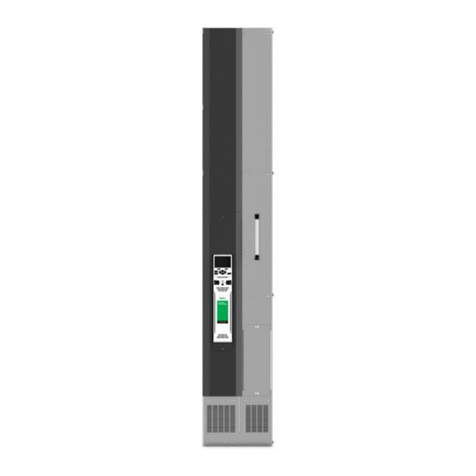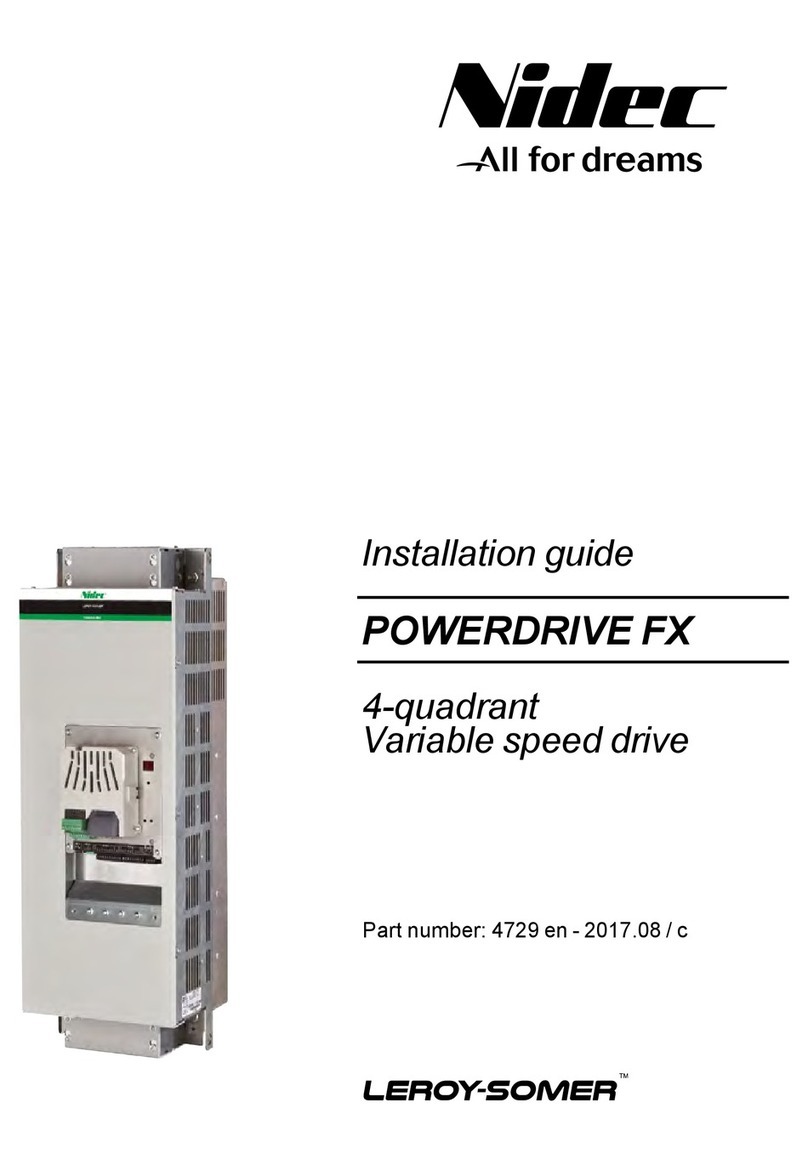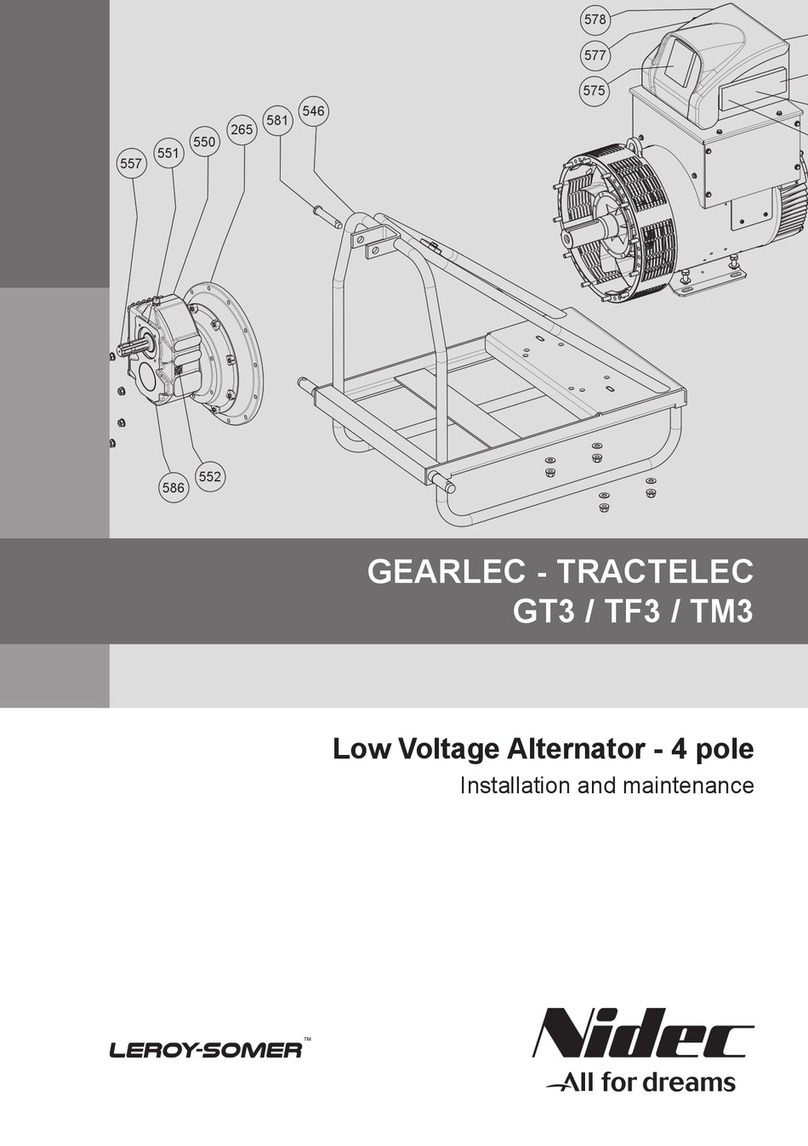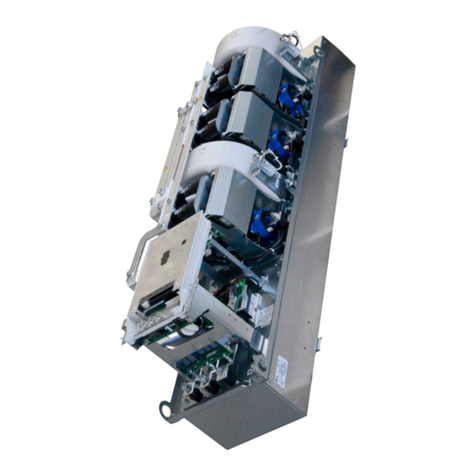
2018.11 / m
2
Electric Power Generation Installation and maintenance
LSA 40
Low Voltage Alternators - 4 pole
4455 en -
SAFETY MEASURES
Before using your machine for the rst time,
it is important to read the whole of this
installation and maintenance manual.
All necessary operations and interventions
on this machine must be performed by a
qualied technician.
Our technical support service will be pleased
to provide any additional information you
may require.
The various operations described in this
manual are accompanied by recom-
mendations or symbols to alert the user to
potential risks of accidents. It is vital that
you understand and take notice of the
following warning symbols.
Warning symbol for an operation capable
of damaging or destroying the machine
or surrounding equipment.
Warning symbol for general danger to
personnel.
Warning symbol for electrical danger to
personnel.
SAFETY INSTRUCTIONS
We wish to draw your attention to the
following 2 safety measures which must be
complied with:
a) During operation, do not allow anyone
to stand in front of the air outlet guards,
in case anything is ejected from them.
b) Do not allow children younger than 14
to go near the air outlet guards.
A set of self-adhesive stickers depicting the
various warning symbols is included with
this maintenance manual. They should be
positioned as shown in the drawing below
once the machine has been fully installed.
WARNING
The alternators must not be put into
service until the machines in which they
are to be incorporated have been
declared compliant with Directives EC
and plus any other directives that may be
applicable.
This manual is to be given to the end
user.
The range of electric alternators and
their derivatives, manufactured by us or
on our behalf, comply with the technical
requirements of the customs Union
directives (EAC).
© - We reserve the right to modify the
characteristics of this product at any time in
order to incorporate the latest technological
developments. The information contained
in this document may therefore be changed
without notice.
This document may not be reproduced in
any form without prior authorisation.
All brands and models have been registered
and patents applied for.
This manual concerns the alternator which you have just purchased.
We wish to draw your attention to the contents of this maintenance manual.



































